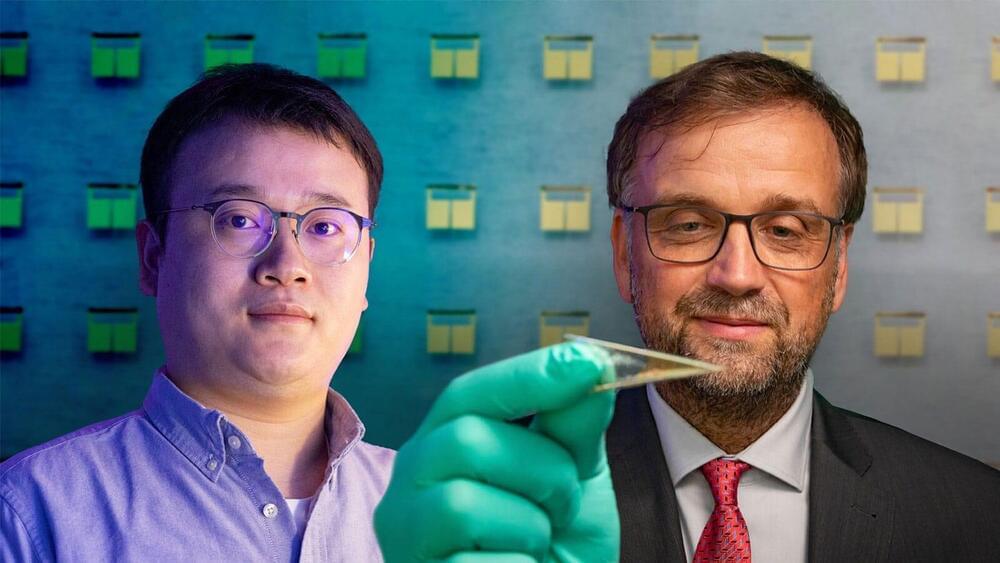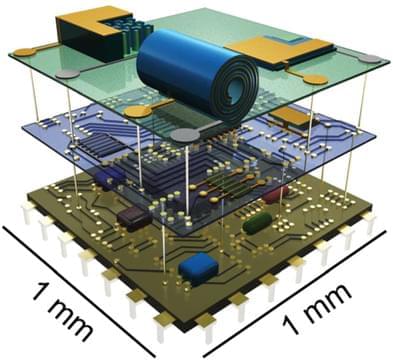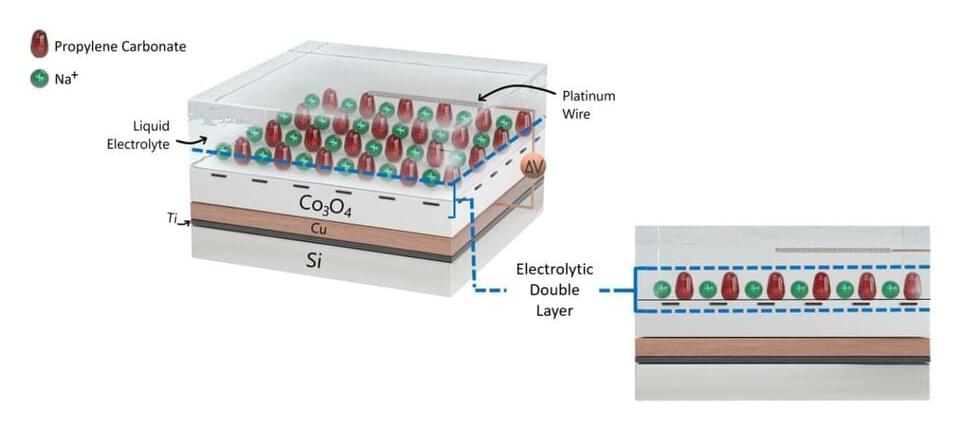But don’t expect to use it just yet.
Meta, formerly Facebook, showed off a prototype of an AI world creation system that could power its “metaverse” Horizon virtual worlds.


The new microbattery is roughly the size of a gain of dust – less than one square millimeter – and has a minimum energy density of 100 microwatt hours per square centimeter. To achieve this, the team winded up current collectors and electrode strips made of polymeric, metallic, and dielectric materials at the microscale. The researchers used Swiss-roll or micro-origami process.
The layered system with inherent tension is created by consecutively coating thin layers of polymeric, metallic, and dielectric materials onto a wafer surface. The mechanical tension is released by peeling off the thin layers, which then automatically snap back to roll up into a Swiss-Roll architecture to create a self-wound cylinder microbattery. The method is compatible with established chip manufacturing technologies and capable of producing high throughput microbatteries on a wafer surface.
The team behind the world’s smallest battery says it could be used in the human body, where tiny sensors and actuators require a continuous power supply. They also claim that the rechargeable microbatteries could also power the world’s smallest computer chips for about ten hours – for example, to measure the local ambient temperature continuously. In addition, it has great potential in future micro-and nanoelectronic sensorics and actuator technologies, in the Internet of Things, miniaturized medical implants, microrobotic systems, and ultra–flexible electronics.

🚨 A major breakthrough.
Scientists have successfully implanted an artificial neuron into a Venus Flytrap, in what could be a major breakthrough in the merging of living things and computers.
The neuron was able to control the plant, making its lobes close, the scientists report.
That in turn could be a major step towards the development of brain-machine interfaces as well as intelligent robots, they suggest. Such technology will require computers and living things to combine – but that has so far proven difficult.

Imagine a field of wheat that extends to the horizon, being grown for flour that will be made into bread to feed cities’ worth of people. Imagine that all authority for tilling, planting, fertilizing, monitoring and harvesting this field has been delegated to artificial intelligence: algorithms that control drip-irrigation systems, self-driving tractors and combine harvesters, clever enough to respond to the weather and the exact needs of the crop. Then imagine a hacker messes things up.

Imagine a field of wheat that extends to the horizon, being grown for flour that will be made into bread to feed cities’ worth of people. Imagine that all authority for tilling, planting, fertilizing, monitoring and harvesting this field has been delegated to artificial intelligence: algorithms that control drip-irrigation systems, self-driving tractors and combine harvesters, clever enough to respond to the weather and the exact needs of the crop. Then imagine a hacker messes things up.
A new risk analysis, published today in the journal Nature Machine Intelligence, warns that the future use of artificial intelligence in agriculture comes with substantial potential risks for farms, farmers and food security that are poorly understood and under-appreciated.
“The idea of intelligent machines running farms is not science fiction. Large companies are already pioneering the next generation of autonomous ag-bots and decision support systems that will replace humans in the field,” said Dr. Asaf Tzachor in the University of Cambridge’s Center for the Study of Existential Risk (CSER), first author of the paper.



And it’s the size of a grain of dust. Energy storage might have been revolutionized thanks to a common dessert dish.
Advances in microelectronics have enabled the use of miniaturized computers for autonomous intelligence at the size of a dust particle less than one square millimeter across and a few hundred micrometers thick, creating an environment for ubiquitous computing. However, the size mismatch between microbatteries and microelectronics has emerged as a fundamental barrier against the take-off of tiny intelligent systems requiring power anytime anywhere. Mainstream microbattery structures include stacked thin films on the chip or electrode pillars and on-chip interdigitated microelectrodes. Nevertheless, available technologies cannot shrink the footprint area of batteries while maintaining adequate energy storage. Alternatively, the on-chip self-assembly process known as micro-origami is capable of winding stacked thin films into Swiss-roll structures to reduce the footprint area, which exactly mimics the manufacture of the most successful full-sized batteries—cylinder batteries. In addition to discussing in detail the technical difficulties of reducing the size of on-chip microbatteries with various structures and potential solutions, this Perspective highlights the following two basic requirements for eventual integration in microcomputers: minimum energy density of 100 microwatt-hour per square centimeter and monolithic integration with other functional electric circuits on the chip.


With the advent of Big Data, current computational architectures are proving to be insufficient. Difficulties in decreasing transistors’ size, large power consumption and limited operating speeds make neuromorphic computing a promising alternative.
Neuromorphic computing, a new brain-inspired computation paradigm, reproduces the activity of biological synapses by using artificial neural networks. Such devices work as a system of switches, so that the ON position corresponds to the information retention or “learning,” while the OFF position corresponds to the information deletion or “forgetting.”
In a recent publication, scientists from the Universitat Autònoma de Barcelona (UAB), the CNR-SPIN (Italy), the Catalan Institute of Nanoscience and Nanotechnology (ICN2), the Institute of Micro and Nanotechnology (IMN-CNM-CSIC) and the ALBA Synchrotron have explored the emulation of artificial synapses using new advanced material devices. The project was led by Serra Húnter Fellow Enric Menéndez and ICREA researcher Jordi Sort, both at the Department of Physics of the UAB, and is part of Sofia Martins Ph.D. thesis.